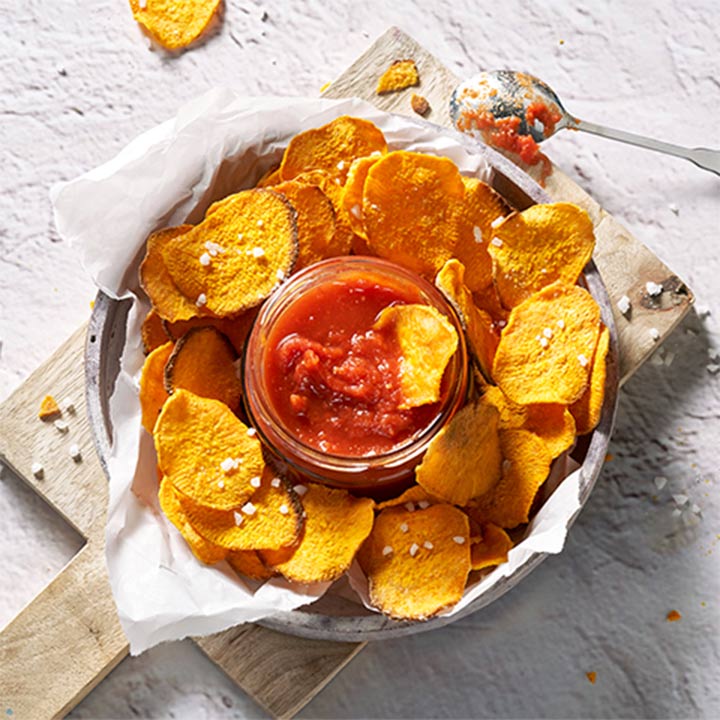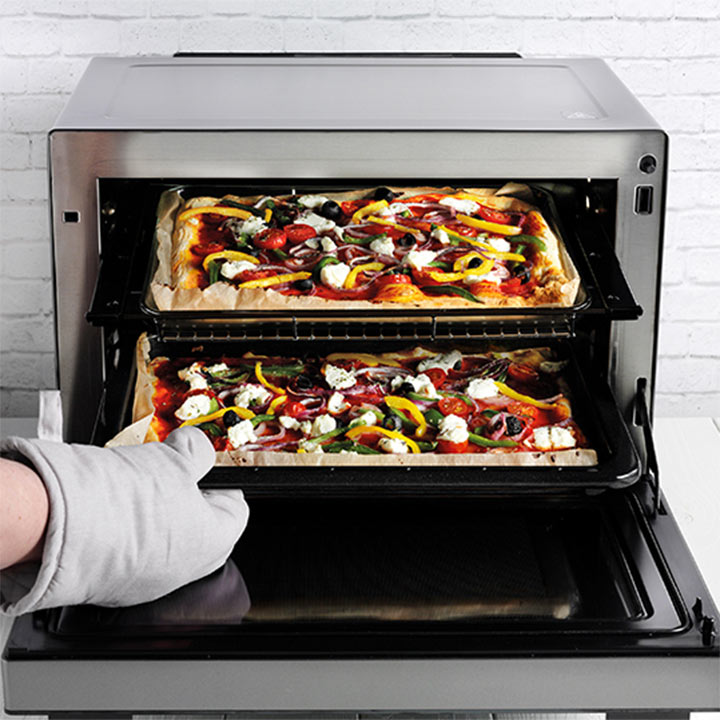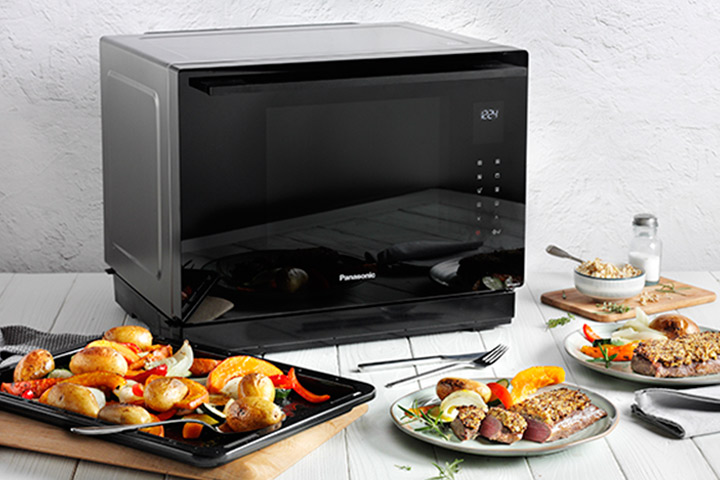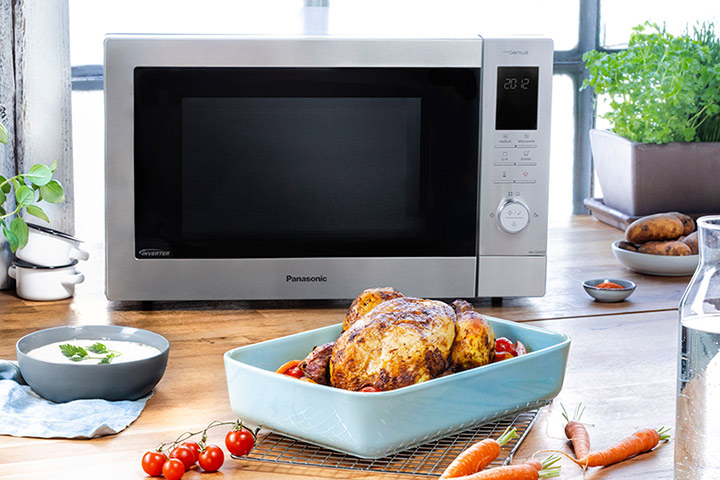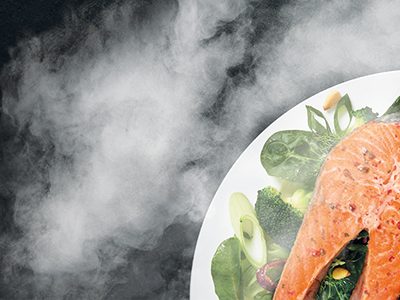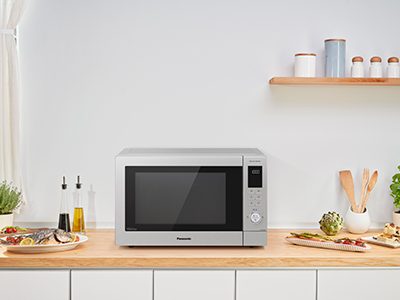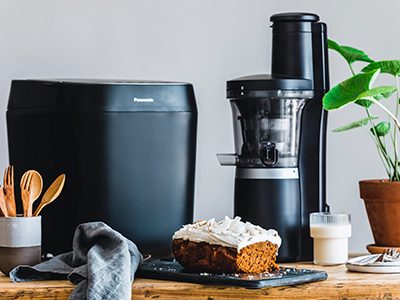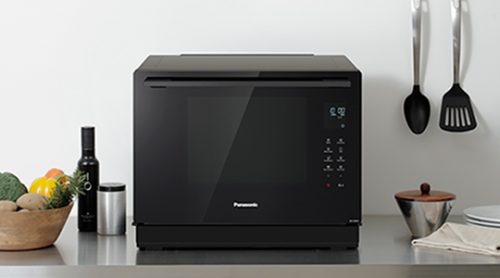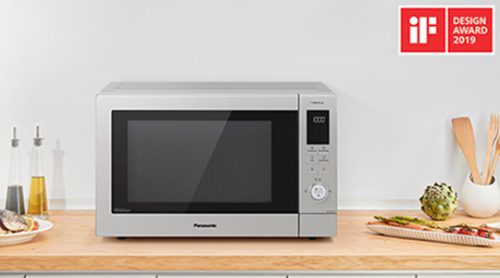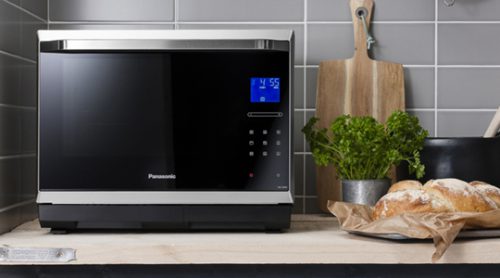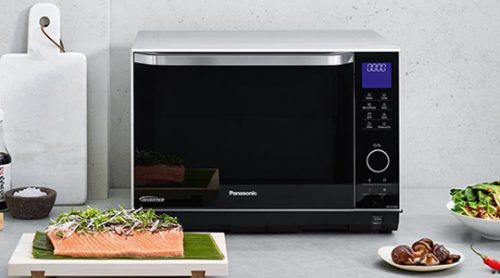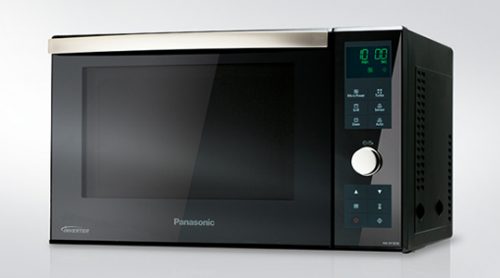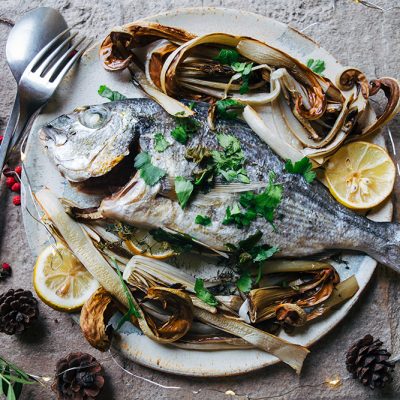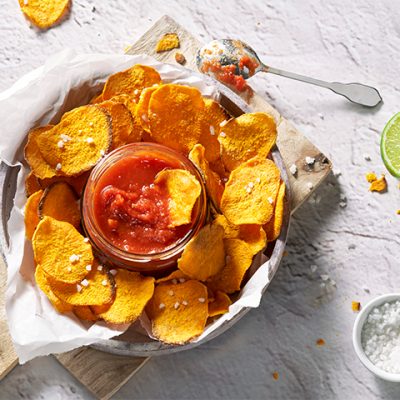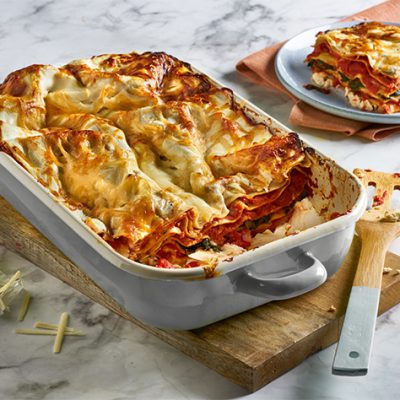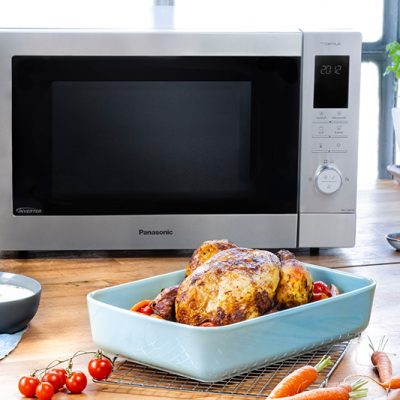If you’re in the market for a new oven or have recently purchased one, you’ll likely have come across the term ‘convection oven.’ But what exactly are convection ovens, and how do they differ from conventional ovens? In this article, we will cover everything you need to know about convection cooking, from what convection ovens are and how they work, through to temperature adjustments you need to make when using this cooking method.
What is a convection oven?
As opposed to conventional ovens, which cook food by simply heating the air inside them, convection ovens use a fan and exhaust system to circulate hot air around the oven and vent it back out. Not only does this result in hot air being blown directly onto the food during the cooking process, which helps it cook faster and more evenly, but it also helps avoid stagnant air within the oven.
The process is comparable to experiencing wind chill on a cold day; you feel the cold a lot more standing outside on a windy, cold day than you would if there were no wind.
Many ovens have both a convection and conventional setting, which gives you the freedom to choose the option that’s right for your recipe. If you want to take simplicity and ease to the next level, however, you can even find combination microwave ovens – such as the award winning Panasonic NN-CD87 – that allow you to bake and grill foods without the need for multiple appliances.
What are the benefits of convection cooking?
It cooks food faster
Convection ovens speed up the cooking process by around 25% compared to conventional ovens; this is due to hot air blowing directly onto the food, rather than simply surrounding it.
It cooks food more evenly
Conventional ovens tend to have hot spots – areas that heat up faster or to a higher temperature – which can result in unevenly cooked food. Convection ovens, on the other hand, even out temperature variances by circulating hot air, keeping the temperature uniform throughout the oven.
It’s more energy-efficient
Due to the fact that food is cooked faster and usually at a lower temperature in convection ovens, these tend to be slightly more energy-efficient than conventional ovens.
It’s better at browning
Due to a lack of ventilation, the air inside conventional ovens can become humid. The fan and exhaust system of convection ovens, however, reduces the amount of moisture which creates a dry environment, perfect for browning foods while keeping them juicy on the inside.
When to use convection
Convection cooking can yield great results in a variety of scenarios. The constant hot air and even distribution of heat, for example, really benefits foods that are roasted, such as meats and vegetables. Not only do they cook faster and more evenly in a convection oven, but you can achieve that sought-after combo of crispy skin and juicy interior with ease.
The results can be just as good when baking. Convection heat creates steam and melts fat quicker, which helps when baking pies and pastries; furthermore, the circulating hot air helps bake more than one tray of cookies and brownies at a time, reducing the time it takes to make a batch.
While there are a number of benefits to convection cooking, there are also situations – depending on what you’re cooking – where circulating and blowing hot air on foods may not be ideal. If you’re cooking cakes, souffles, custards and quick breads, for example, the hot air blowing on these could result in an uneven, lopsided final product. In these situations, using a conventional oven will likely yield better results.
Convection cooking temperature
Recipes found online or in cookbooks will often use timings and temperatures for conventional ovens, so it’s important to adjust these slightly when convection cooking.
As a rule of thumb, set your convection oven or combi microwave temperature 25 degrees lower than the recipe suggests. Since convection ovens cook food about 25% faster, you can expect the food to be cooked faster (up to 25% faster) than the recipe suggests, so make sure you regularly check the progress of the food to avoid it burning.
While you should always check your owner’s manual for exact cooking time and temperature instructions, we’ve put together the chart below to give you an idea of what temperatures you can expect to cook popular foods at in a convection oven.
| Dishes | Temperature |
|---|---|
| Dried Fruits /Beef Jerky | 60°C – 70°C |
| Meringues | 100°C – 110°C |
| Meat & Fish Pate / Potted Meat / Drying Herbs | 120°C – 140°C |
| Baked Eggs / Fruit Cakes / Macaroons | 150°C – 160°C |
| Quiche / Cookies / Strudel / Biscuits / White Meat / Slow Cooked or Braised Meat | 170°C – 180°C |
| Whole Fish | 190°C – 210°C |
| Poultry / Bread | 220°C – 230°C |
| Pizzas / Tarts / Puff Pastry | 230°C |
And there you have it, our simple guide to convection cooking. If you’re looking for some inspiration, discover our delicious recipes below, designed specifically to be made in a convection oven or combination microwave.
- Sweet Potato Crisps with Tomato Salsa
- Mediterranean Feta and Onion Tarts with sun-dried tomatoes and olives
- Whole Chicken With Mixed Vegetables and Spiced Yoghurt
- Pizza
- Baked Sea Bream with Herbs and Roasted Radicchio
- Baked Potatoes with Mushrooms
- Quiche Lorraine
- Okara-Cracker
- Standard Bread Rolls
- Twisted Bread
- Vegan Chocolate Babka
- Vegan Brownies
Convinced by the benefits of convection cooking, but don’t yet have an appliance to help you make the most out of this handy cooking method? Explore Panasonic’s wide range of versatile combination microwave ovens and find the perfect kitchen companion; not only do our combi ovens have a convection function, but many also allow you to easily grill and steam your food to perfection.

